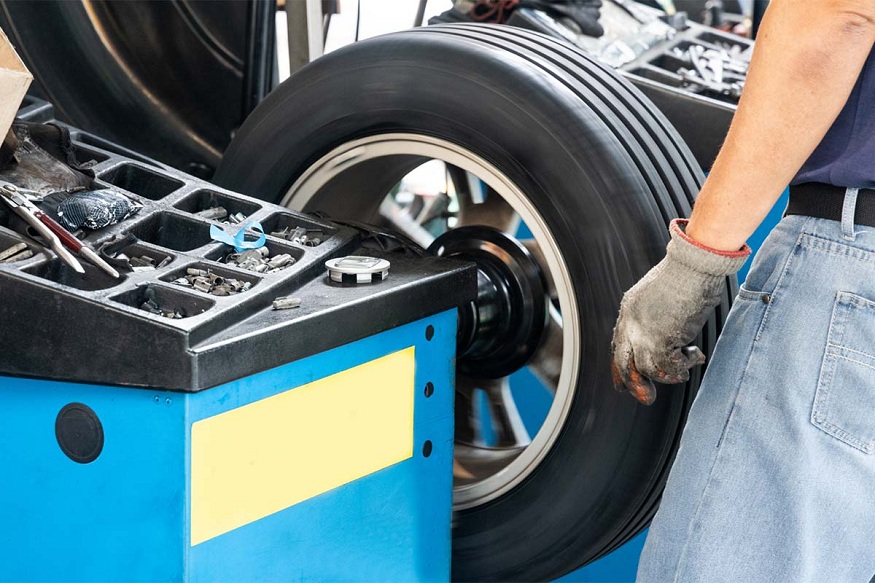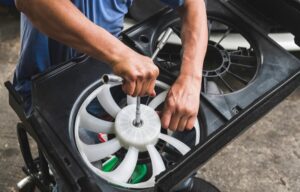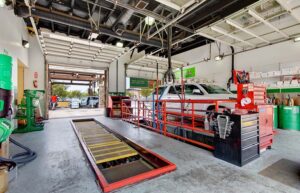
When buying new tires, it’s absolutely critical the tires be mounted and balanced properly before you drive away. Your tires determine how smooth your drive is, as well as how easily you’ll be able to maintain traction on the road. Poorlyinstalled tires can be dangerous! That’s why it’s so important to allow trained professionals to handle your tire mounting and balancing.
Tire mounting isn’t a job for amateurs. Professional garages have the tools and training to ensure the installation is done properly and can ensure you have a safe drive for many miles to come.
Here’s how they do it.
How a Great Auto Shop Mounts and Balances Your Tires
The process is more complicated than you might realize!
1 – Deflating and removing the wheel
First, the wheel needs to be removed from the car. Then, the tire is completely deflated by removing the valve core, allowing the air to escape.
2 – Separating the tire bead from the rim
Tires are held in place by a piece of rubber on the inside of the tire which attaches directly to the rim. This has to be separated with a specialized bead-breaking tool. Using the wrong tool could damage the wheel!
3 – Removing the old tire
Then the old tire is lubricated, so it can be removed from the rim more easily.
4 – Cleaning and inspecting the rim
In most cases, your rim can be reused – but the tire mounting specialist is still going to carefully inspect it for damage, as well as clean it to ensure the new wheel installation goes smoothly.
5 – Installing new valves on each new tire
New tires need to have valves installed, which also includes the O-rings, caps, and cores. Only trained experts can do this without damaging the new tire itself.
6 – Cleaning and lubricating the new tire
The new tire is given its own cleaning and is dried off. Then lubrication is added to the bead to aid in installation.
7 – Installing the new tire
Finally, the tire is ready to be placed on the rim, with the bead inserted properly to ensure a firm grip.
8 – Finalizing the new valve
Once the tire is in place, the valve can be pushed through and a new core added, completing the installation.
9 – Inflating the new tire
Every tire must be precisely inflated to the manufacturer’s specifications. Too much or too little air can both be dangerous!
10 – Balancing the tire
Have you ever wondered why there are red and yellow dots on new tires? They’re there to help technicians balance the tire properly. The yellow dot indicates the heaviest part of the tire, and the red dot is over the lightest part of the tire. That, along with computer assistance, makes balancing easier.
Car and truck tires might seem simple, but they require a lot of care to properly install and balance. Whenever you’re buying new tires, let the shop handle the tire mounting and balancing. That way you’re guaranteed to have a great drive on your new tires!








